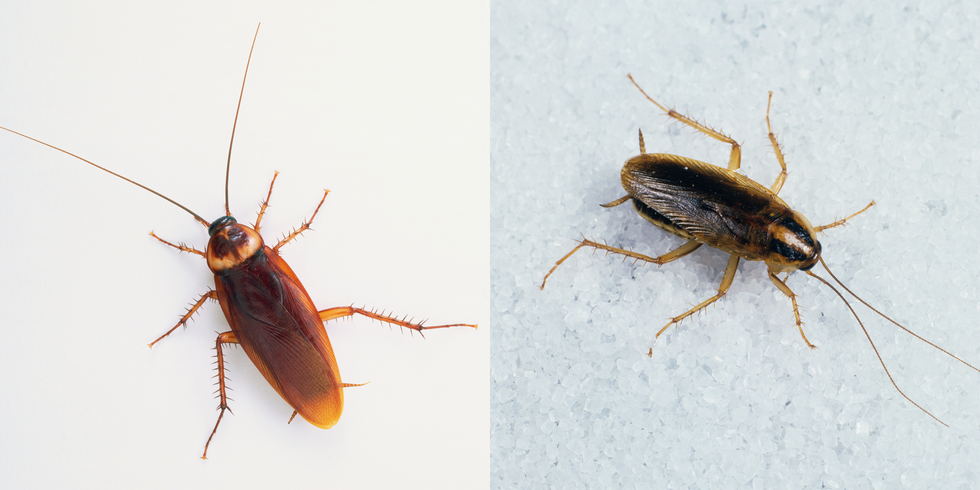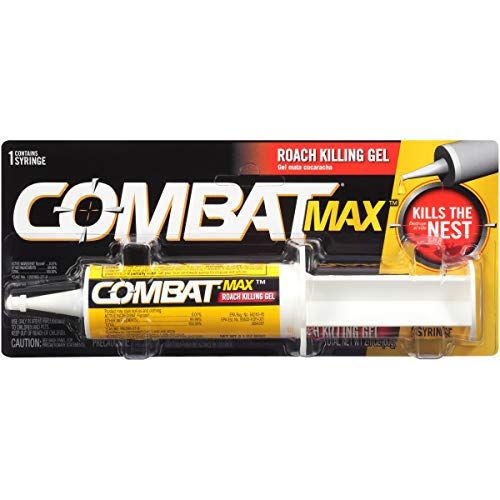For most of us, waking up every now and then with an itchy welt is completely normal. Typically, we assume it’s from a house spider, maybe a mosquito who snuck in through the window during the warmer months, or—worst case scenario—it could even be bed bugs. But if you’ve ever seen a cockroach make its way into your home, you’ve probably wondered with some concern: Do roaches bite? Valid question. We asked some experts for answers.
Do roaches bite?
As annoying as cockroaches might be, here’s some good news: It’s very unlikely that they’d bite you or your pets. “They don’t have any reason to,” says Dini Miller, Ph.D., professor of urban entomology at Virginia Tech and Urban Pest Management Specialist for the state of Virginia. “Their mouthparts just cannot pierce human skin.”
In fact, cockroach “bites” on humans have only been recorded a few times throughout history. One was in former Soviet Union hospitals where people had severely open wounds that German cockroaches would feed on. Another was when cockroaches were being transported on ships of enslaved people and were allegedly biting people’s toenails in that environment. “But a lot of these types of reports are very anecdotal and unsubstantiated,” says Coby Schal, Ph.D., who heads the Schal Lab at North Carolina State University, which focuses on the study of cockroaches.
Why do cockroaches bite?
Roaches are motivated by food, and they’re always on the hunt for it, especially in times of scarcity. Miller says the most recent documentation of cockroach “bites” has been in low-income housing where babies go to sleep at night with food remnants on their mouths, which the cockroach might crawl up and start trying to eat. But even in those cases, documented is the key word, as these instances have not been viewed, says Miller. “That’s as close as it gets,” she adds. “There’s no cockroach that’s going to come out and bite you.”
What does a cockroach bite look like?
Like Miller and Schal explained, there’s little documentation of cockroach bites because they’re extremely rare. So it’s difficult to describe what they might look like. As Miller pointed out, they have small mandibles that would struggle to break skin, but if a roach were to feed on human flesh in times of scarcity, it could cause minor irritation.
With that being said, if you do spot a bite at random, it’s important to confirm the type of insect responsible—because it’s more likely to be a different house bug.
What do roach bites look like?
Although there are different types of cockroaches, they all have certain similar characteristics. “They’re all typically flat and oval-shaped if you just look at them from above,” says Scott O’Neal, Ph.D., an urban entomology researcher at the University of Nebraska.
Cockroaches are usually reddish-brown in color and have three main body parts: the abdomen (which is the back of the roach), the thorax (which is where the legs and wings are attached), and the head (which is where you’ll find the eyes and very long antennas). If you’re struggling to identify a roach, one thing that sets them apart from other insects is the inability to see their head. “The head is tucked underneath,” says O’Neal.
But do cockroaches carry and spread disease?
Even if cockroaches don’t bite you, they can still harm you, both directly and inadvertently. First, cockroaches carry a lot of microbes on them and within them in their gut and digestive system, says Schal. Eventually, the roaches will defecate those microbes. And while some of these microbes are totally harmless, others can be pathogenic, which means they have the ability to cause disease. While there isn’t a ton of evidence to link roaches to specific disease outbreaks, the pests have been found to carry salmonella and the polio virus, per the Centers for Disease Control and Prevention (CDC).
The trouble is, in our homes, cockroaches will most often travel between the bathroom and the kitchen, as they need water and food. “When we go to the bathroom and then go to the kitchen, we wash our hands,” says Schal. “The cockroach doesn’t. So the cockroach may contact fecal material, may contact organic material, and then from there go to the kitchen and, say, step on utensils or even our food.”
So if the cockroach was exposed to something like MRSA—a multidrug-resistant bacteria—that could be a huge issue. “If that is transmitted to our food and ultimately to humans, that can create a very substantial health risk,” says Schal.
Another problem? Cockroaches produce a lot of allergens, many of which impact humans, says Schal. That can be harmful because if you’ve been exposed to these allergens before, subsequent exposure might trigger an asthmatic response. “It can be very severe, and can even result in anaphylactic shock,” says Schal.
Finally, cockroaches can indirectly harm you by way of the insecticides you use in attempt to exterminate them, many of which—especially sprays—are often used incorrectly. “People don’t know how to use these materials and by misusing them, they contaminate the environment, they contaminate themselves, and they can result in health risks due to the insecticide rather than due to the insect,” Schal explains.
How to get rid of cockroaches (safely)
The best way to get rid of cockroaches is by using cockroach baits, which are gel formulations that come in 30-millimeter syringe tubes. And lucky for you, you can find them at your local hardware store or supermarket, and they won’t cost you more than a few dollars. “With literally $5 or maximum $10, you can eliminate an infestation in the home,” says Schal.
Simply put dabs of the bait—ideally on 2-inch squares of wax paper, which protects the bait from other insecticides—in areas where you’ve seen cockroaches appear. Most likely, that’ll be in your bathroom or kitchen, which is where cockroaches are most commonly found.
“At night, cockroaches come out and they go, ‘Wow, what a smorgasbord; this is great,’” says Schal. “And they start eating this bait, the bait contains an insecticide, and the insecticide kills the cockroach. That’s extremely effective.”
At the end of the day, while cockroaches are certainly a nuisance, you can rest easy knowing they won’t bite you—and they can be nixed from your life with just a bit of work on your end.















